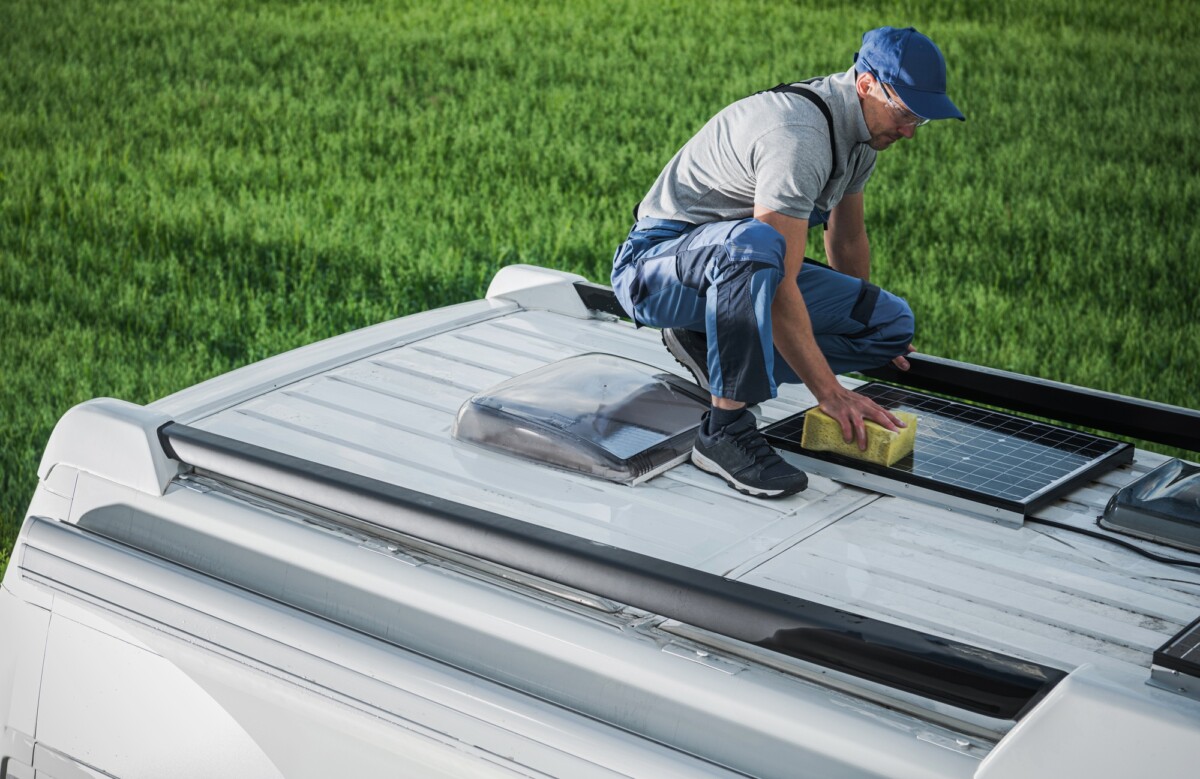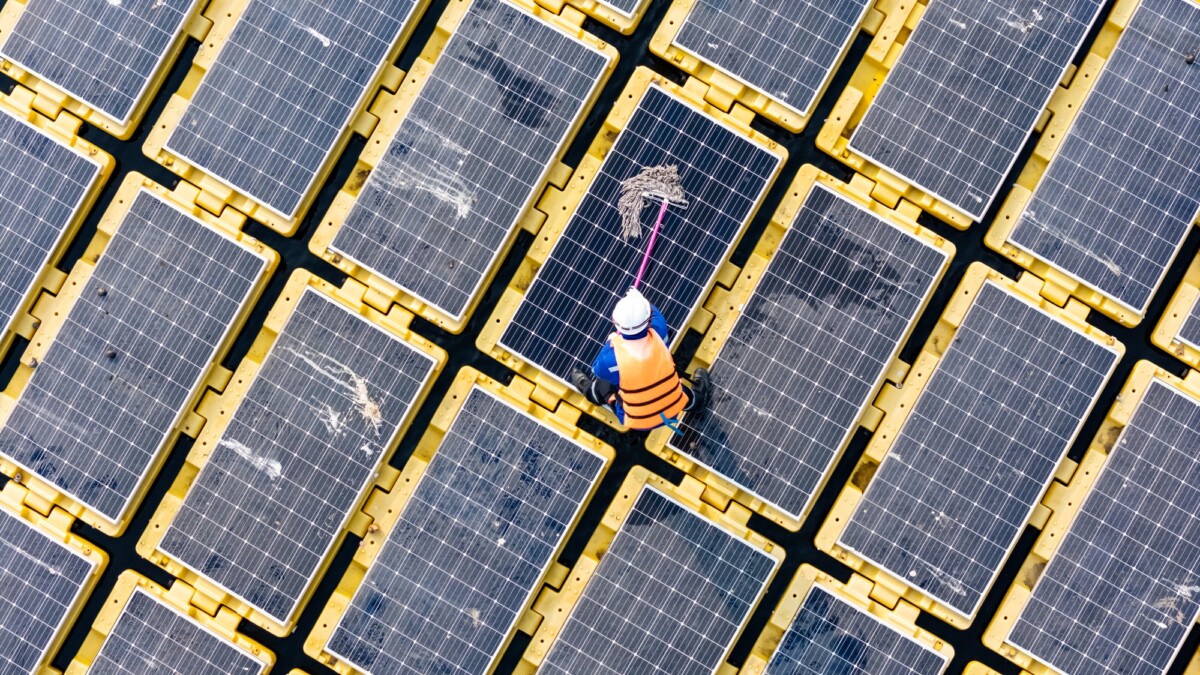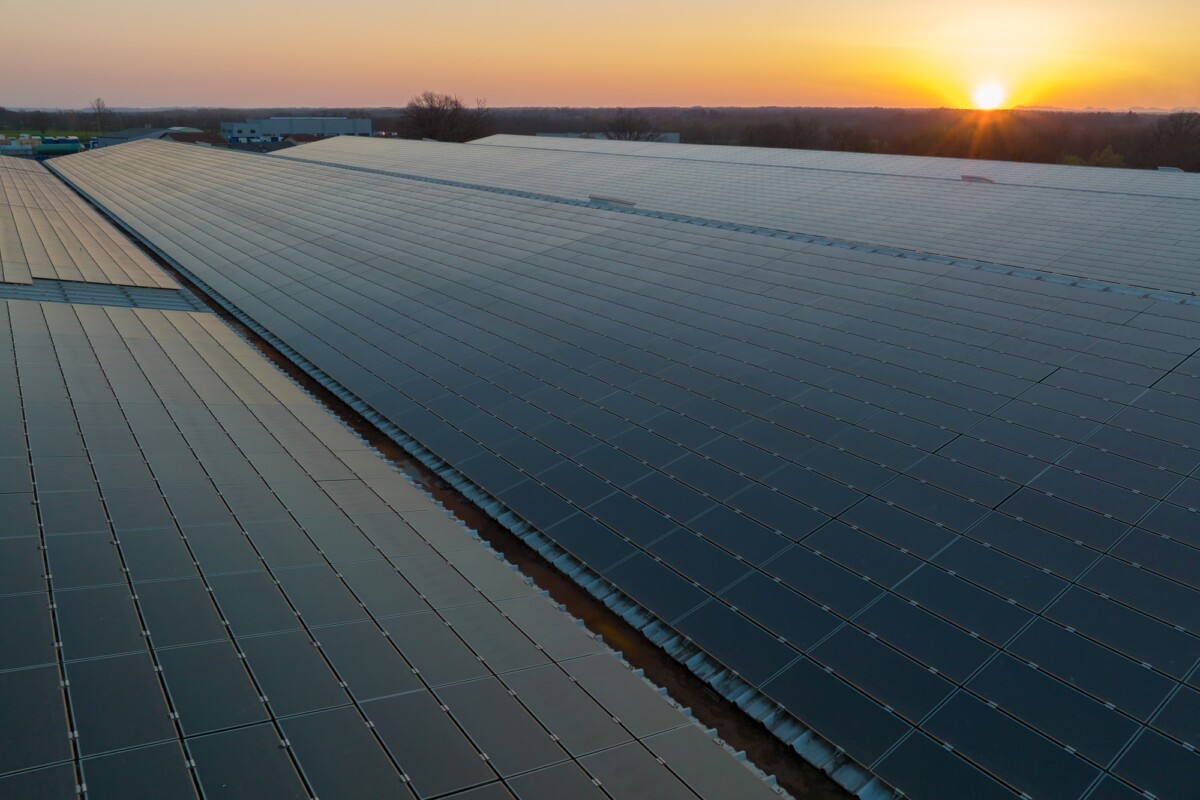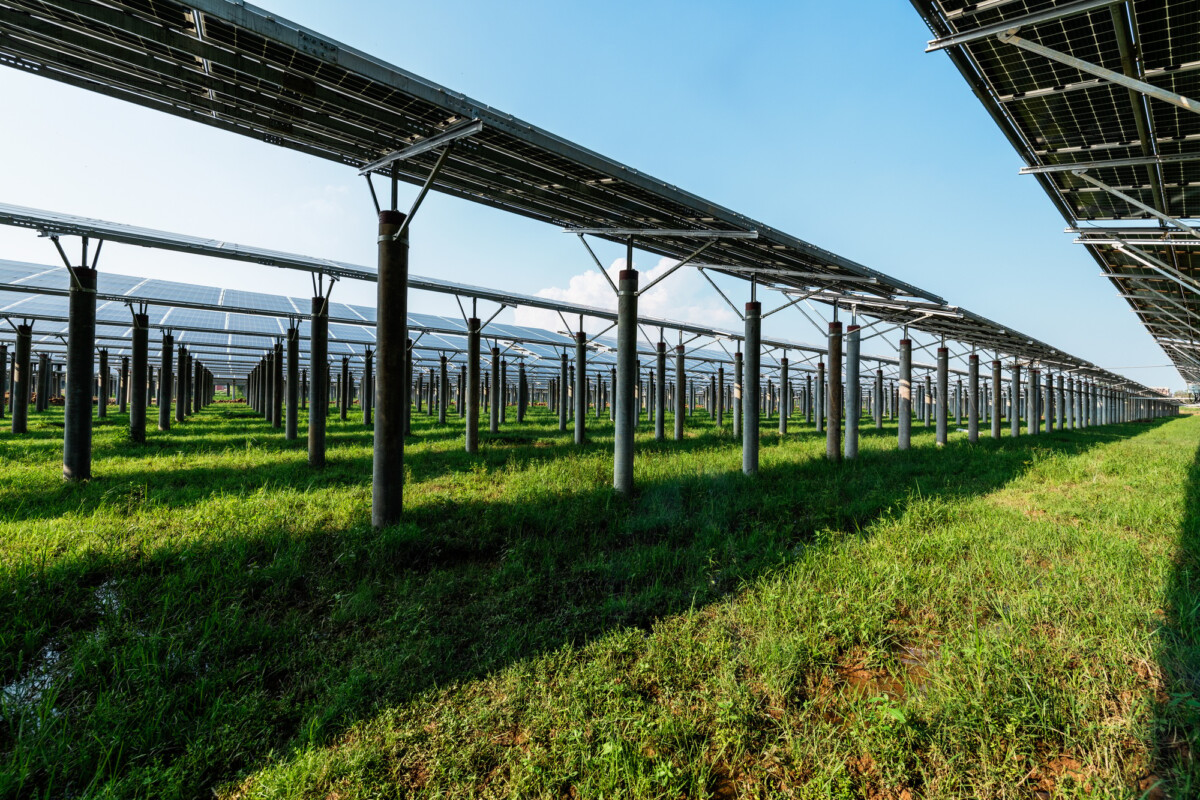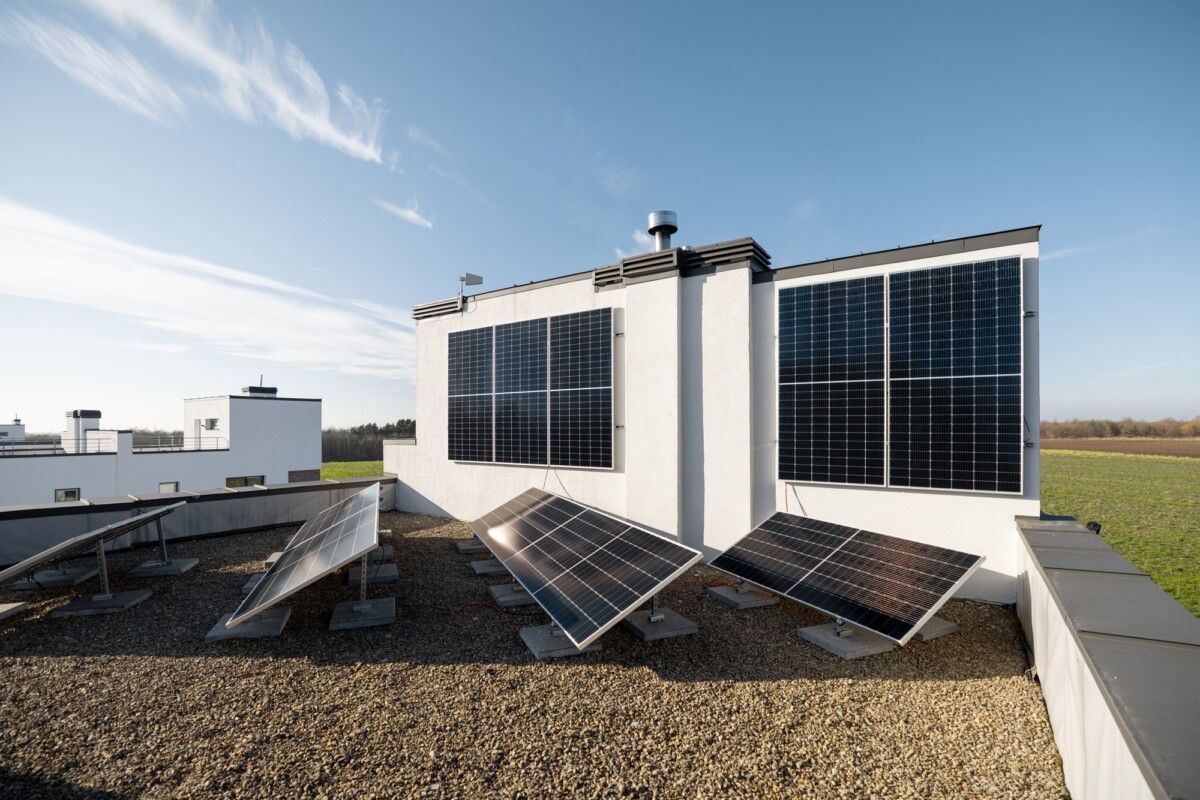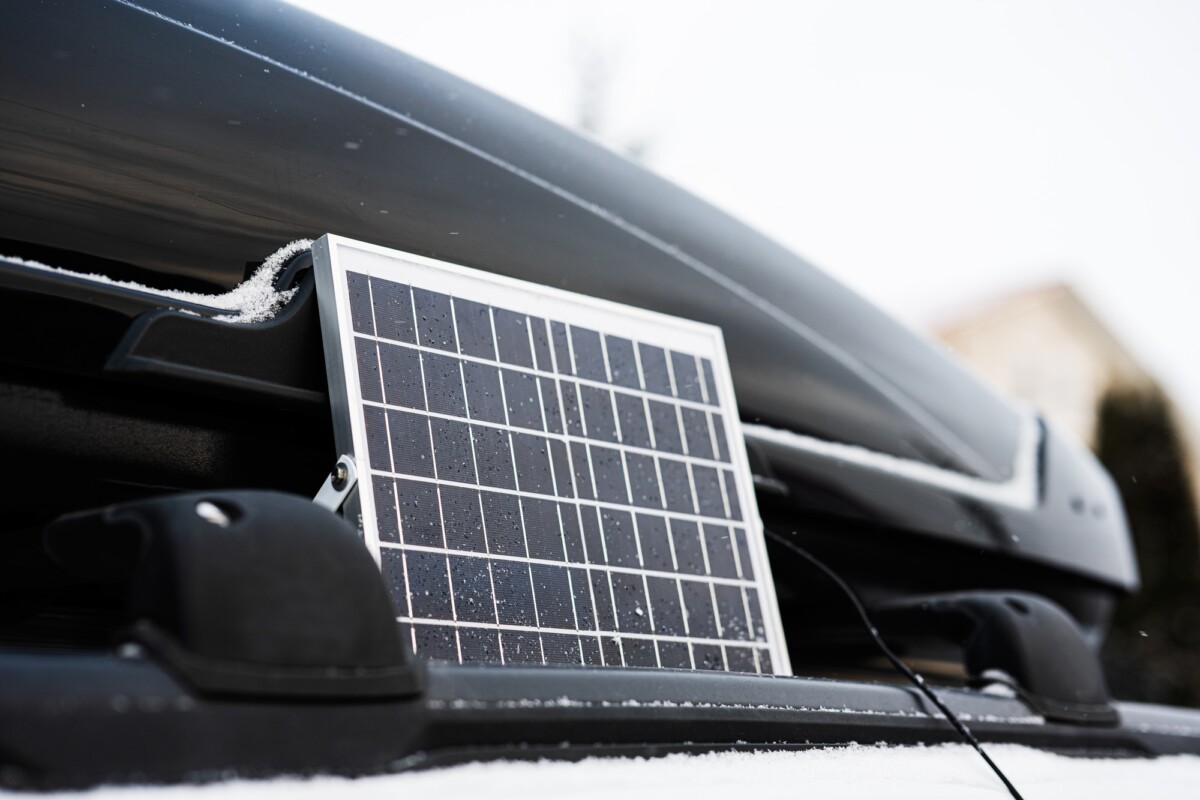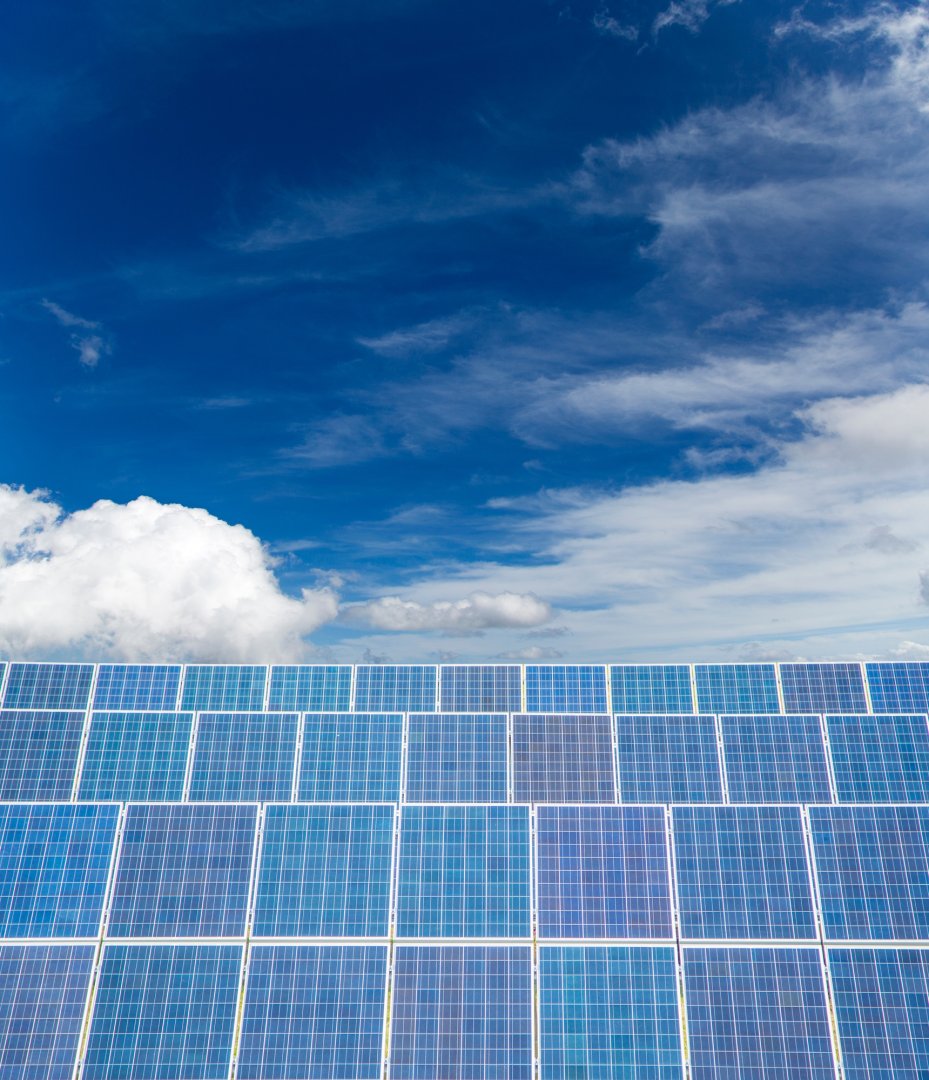Understanding the Cost of Solar Panels in Utah
When considering Solar Panel Costs in Utah, understanding the cost is essential. Prices can vary widely, typically ranging from $10,000 to $30,000 for a full installation. This variation depends on factors like system size, panel type, and installation complexity. Larger systems, while more expensive, generate more power. Monocrystalline panels, known for their efficiency, are pricier than polycrystalline options. Additionally, the roof’s type and angle can influence installation costs.
For example, a typical Utah household might install a 5kW system at an upfront cost of around $15,000. However, federal tax credits and state incentives can significantly reduce this expense. Over time, the savings on electricity bills make solar panels a financially wise investment.
Key Benefits of Solar in Utah:
- Energy Independence: Less reliance on the grid and protection against rising energy costs.
- Environmental Impact: Solar energy is a clean, renewable resource that helps reduce carbon footprints.
- Increased Home Value: Homes equipped with solar panels often sell at a premium.
In summary, while the initial cost of solar panels in Utah may seem high, financial incentives and long-term savings make them an appealing choice. Understanding these cost factors and benefits can help you make a decision that supports both your financial and environmental objectives.
Factors Influencing Solar Panel Prices in Utah
Understanding the cost of solar panels in Utah involves considering several key factors that influence pricing. While the initial investment might seem high, these elements can make solar energy more accessible.
System size is a primary factor. Larger systems cost more initially but offer greater savings over time. For example, a 5kW system might suffice for an average household, whereas larger homes might need a 10kW system, increasing the upfront cost.
The type of solar panels also affects pricing. Monocrystalline panels, known for their efficiency and sleek design, are generally more expensive than polycrystalline panels. However, their higher efficiency can lead to more significant savings on energy bills in the long run.
Installation costs vary based on the complexity of the setup and the installer chosen. It’s advisable to obtain multiple quotes from local installers to secure the best deal. While rooftop installations are typically straightforward, ground-mounted systems may incur additional costs due to extra materials and labor.
Moreover, Utah provides several incentives and rebates that can substantially reduce solar panel costs. The federal solar tax credit, along with state-specific incentives, can lower expenses, making solar energy a more viable option for homeowners.
In summary, understanding these factors—system size, panel type, installation costs, and incentives—can help you make an informed decision and optimize your investment in solar energy.
Comparing Solar Panel Installation Costs Across Utah
Switching to solar energy in Utah requires a good grasp of the cost landscape, which can vary widely based on several factors. The cost of solar panels in Utah is influenced by the size of the installation, the type of panels, and the specific location within the state. Understanding these factors is key to making an informed decision.
Key Cost Factors:
- System Size: Larger systems have higher upfront costs but offer greater long-term savings.
- Panel Type: High-efficiency panels may be pricier initially but are more cost-effective over time.
- Location: Costs differ between urban and rural areas due to variations in labor and permitting fees.
For example, a residential solar panel system in Salt Lake City typically costs between $10,000 and $15,000 after federal tax incentives. In rural areas, the cost might be slightly lower due to reduced labor expenses. However, these costs can vary based on the property’s specific needs and conditions.
Benefits of Solar Investment:
- Energy Savings: Significant reduction in electricity bills.
- Environmental Impact: Solar energy is a clean, renewable resource that reduces carbon footprints.
- Incentives: Utah offers incentives and rebates to lower initial investments.
By understanding these cost components and benefits, Utah residents can make informed decisions about investing in solar energy, whether in Salt Lake City or Moab, making it a step towards a sustainable future.
How to Calculate the Return on Investment for Solar Panels in Utah
Investing in solar panels in Utah is a smart financial decision beyond just going green. Calculating the return on investment (ROI) helps you understand the long-term benefits. Here’s how you can evaluate the ROI for solar panels in Utah, considering factors that affect costs and savings.
The initial cost of solar panels in Utah ranges from $10,000 to $30,000, depending on system size and efficiency. Although this may seem substantial, incentives like federal tax credits and state rebates can significantly lower the upfront expense.
To calculate your ROI, follow these steps:
- Determine Your Energy Savings: Estimate your monthly electricity bill savings. In Utah, households typically save about $1,000 annually by switching to solar.
- Factor in Incentives: Deduct federal and state incentives from your initial cost. The federal solar tax credit, for example, can reduce your cost by 26%.
- Calculate Payback Period: Divide the net cost of your solar system by your annual savings to find out how long it will take to recover your investment.
For instance, if your system costs $20,000 after incentives and you save $1,000 annually, your payback period is 20 years. Rising electricity rates could increase your savings, shortening this period. Ultimately, the ROI for solar panels in Utah is appealing, especially when considering environmental benefits and potential property value increases.

Ready to make the switch? Discover how solar power can lower your bills and boost your home’s efficiency. Get a Free Solar Estimate at FREE SOLAR POWER QUOTES
Exploring Financing Options for Solar Panels in Utah
Switching to solar energy in Utah is a wise decision for both environmental and financial reasons. Despite the initial cost of solar panels in Utah being a significant investment, various financing options can make this transition more affordable.
Solar loans are a popular choice, enabling homeowners to spread the cost over several years. This often results in monthly payments that are lower than current electricity bills, making it a financially sound option. Local banks and credit unions in Utah offer competitive rates on these loans, facilitating easier access to solar energy.
Another option is leasing solar panels, which allows installation without the full upfront cost. Instead, homeowners pay a monthly fee to the leasing company. Although you won’t own the panels, you’ll still enjoy reduced energy bills and contribute to environmental sustainability.
- Federal and State Incentives: Utah residents can benefit from incentives like the federal solar tax credit, which can significantly lower installation costs.
- Power Purchase Agreements (PPAs): With a PPA, a solar provider installs panels on your home, and you purchase the electricity generated at a set rate, often cheaper than local utility rates.
These financing options make solar panels more accessible in Utah, offering pathways to sustainable living and potential cost savings.
The Impact of Government Incentives on Solar Panel Costs in Utah
Government incentives play a crucial role in reducing the cost of solar panels in Utah, making solar energy more accessible to homeowners. These incentives, including tax credits, rebates, and grants, significantly lower the initial investment required for solar panel installation. In Utah, the Renewable Energy Systems Tax Credit can cover up to 25% of installation costs, capped at $1,600, making solar panels a more viable option for many.
Key Benefits of Government Incentives:
- Reduced Initial Costs: Incentives lower the upfront investment, making solar panels more affordable.
- Increased Return on Investment (ROI): Lower costs mean quicker recoupment of investment through energy savings.
- Boosted Property Value: Homes with solar panels often see increased property value, attracting potential buyers.
A real-world example from Salt Lake City highlights the impact of these incentives. A family installed a solar panel system costing $15,000. After applying state tax credits and federal incentives, their net cost dropped to around $10,000, making the project feasible and ensuring a quicker return on investment.
In summary, while the initial cost of solar panels in Utah may seem high, government incentives significantly reduce this burden. By leveraging these programs, homeowners can enjoy the benefits of solar energy affordably, contributing to a more sustainable future.
Long-term Savings: Are Solar Panels Worth the Cost in Utah?
Investing in solar panels in Utah may initially seem costly, but the long-term savings and environmental benefits make it an attractive option. Utah’s sunny climate is perfect for solar energy, helping homeowners cut down on energy bills and reduce their carbon footprint. Let’s explore how the costs and savings stack up.
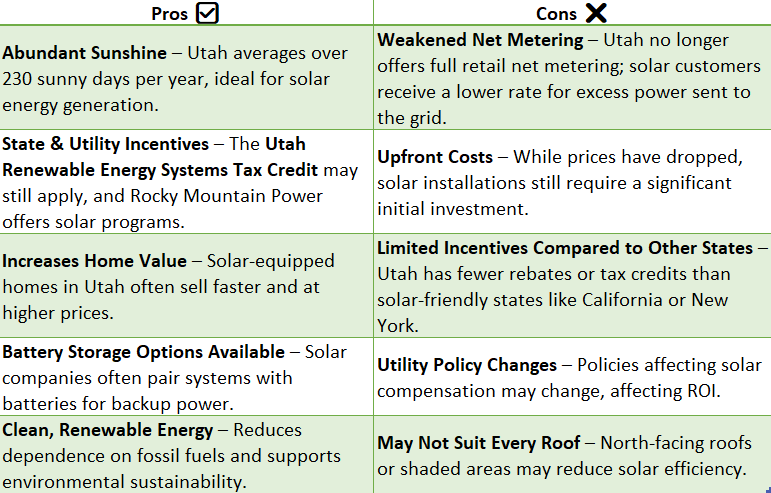
Initial Costs and Incentives
The cost of installing solar panels in Utah typically ranges from $15,000 to $25,000, depending on the system’s size and type. Fortunately, several incentives can help mitigate these expenses:
- Federal Tax Credit: This credit can cover up to 30% of installation costs.
- State Incentives: Utah provides additional tax credits and rebates.
- Net Metering: Homeowners can sell surplus energy back to the grid, adding to their savings.
Real-world Savings
Take, for instance, a Salt Lake City family who installed a 6 kW system. Their initial cost was $18,000, but after incentives, it dropped to $12,600. Over 20 years, they expect to save over $20,000 on electricity, effectively doubling their investment.
Is It Worth It?
Ultimately, the decision to invest in solar panels in Utah depends on individual financial situations and energy needs. However, with state and federal incentives and potential long-term savings, solar panels are a smart investment for many Utah residents, offering both financial and environmental benefits.
Choosing the Right Solar Panel System for Your Utah Home
Going solar in Utah is an excellent way to utilize the state’s abundant sunshine and cut down on energy bills. However, understanding the cost of solar panels in Utah is essential for making a well-informed decision. The cost typically ranges from $10,000 to $30,000, influenced by the size of your home and energy needs. Larger homes or those with higher energy consumption will naturally require more panels, increasing the initial investment.
Benefits of Installing Solar Panels in Utah:
- Energy Savings: Utah’s sunny climate allows homeowners to significantly lower their electricity costs.
- Tax Incentives: Federal and state tax credits can help offset installation expenses.
- Environmental Impact: Solar panels reduce your carbon footprint, promoting a cleaner environment.
To choose the right solar panel system, follow these steps:
- Evaluate Your Energy Usage: Analyze past utility bills to understand your energy consumption.
- Consult with Experts: Contact local solar installers for tailored advice and quotes.
- Explore Financing Options: Many companies offer financing plans to make solar panels more affordable.
By following these steps, you can select a solar panel system that fits your needs and budget. Although the initial cost may seem high, the long-term savings and environmental benefits make it a valuable investment for your Utah home.
Common Misconceptions About Solar Panel Costs in Utah
Navigating the cost of solar panels in Utah can be daunting due to widespread myths. However, understanding the true financial landscape can lead to informed decisions. A common misconception is that solar panels are too expensive for the average homeowner. While the initial cost may seem high, the long-term savings are significant. Solar panels can greatly reduce monthly electricity bills, especially with Utah’s ample sunshine. Additionally, state and federal incentives can lower upfront costs, making solar more affordable than many assume.
Another myth is that solar panel costs are uniform across Utah. In reality, prices vary based on several factors:
- System Size: Larger systems cost more initially but offer greater savings over time.
- Installation Company: Different companies have varying pricing and financing options.
- Roof Type and Condition: Installation complexity can impact costs.
Many also mistakenly believe that solar panels require constant maintenance, increasing costs. In truth, they are low-maintenance, needing only occasional cleaning and inspections to maintain performance.
By debunking these myths, homeowners can better understand the value of solar energy. With accurate information, exploring solar options that meet financial goals and support sustainability becomes a more accessible and rewarding endeavor.
FAQ
-
Are solar panels worth it in Utah?
Yes, Utah has plenty of sunshine and strong net metering policies, making solar panels a cost-effective option. -
What incentives are available for solar in Utah?
Utah residents can claim the federal 30% tax credit and a state tax credit of up to $400 (as of 2024). -
How much do solar panels cost in Utah?
The average cost ranges from $10,000 to $18,000 after incentives, depending on system size and installer. -
Can I sell extra solar energy back to the grid in Utah?
Yes, through Rocky Mountain Power’s net billing program, though export rates vary. -
How long do solar panels last in Utah’s climate?
Solar panels typically last 25–30 years and perform well even in snowy winters with minimal maintenance.
Join the solar movement today! Thousands are already saving—claim your free consultation to get started. Schedule Your Free Consultation at FREE SOLAR POWER QUOTES
Interested in more options? Take a look at SOLAR ENERGY for tailored solar solutions that suit your home!



